
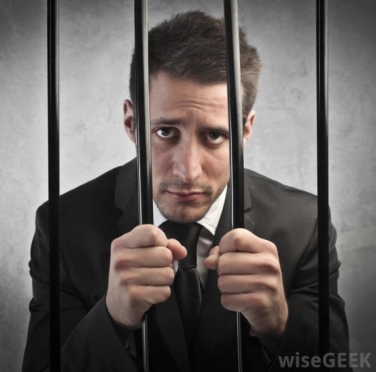
You may have noticed late last year the AANA broadened their official definition of “advertising” beyond that of a paid-for message. To reflect the changes the Internet has brought about, they now refer to “marketing communication” activity as brands are now often engaging in two-way conversations, not just pushing messages one-way via ads.
Early this year CommBank’s CMO Andy Lark, an ex PR man himself, told PR agencies they risked losing their traditional area of expertise to digital experts and integrated agencies.
The issue for businesses isn't simply which external supplier or internal staff is running your social media. With new technology comes a lack of control over how customers choose to seek information and engage with you, which brings a new level potential for confusion. And just as there is confusion around whom within a company or it’s preferred communications partners should be in charge of the conversation, the laws we all operate under right now are equally confused.
Who is responsible for comments posted on your business Facebook page?
In response to an ACCC ruling and fine of a liquor brand for leaving comments on it’s Facebook page deemed to he inappropriate, the AANA extended the reach of its Codes to cover most forms of advertising and marketing communication over which the advertiser or marketer has a reasonable degree of control.
In two recent determinations dealing with brand-owned Facebook pages, the Advertising Standards Board (ASB) reflected the AANA’s intent and stated:
“The Board considered that the Facebook site of an advertiser is a marketing communication tool over which the advertiser has a reasonable degree of control and that the site could be considered to draw the attention of a segment of the public to a product in a manner calculated to promote or oppose directly or indirectly that product."
"As a Facebook page can be used to engage with customers, the Board further considered that the Code applies to the content generated by the page creator as well as material or comments posted by users or friends.”
While you may think this ruling is a bit rough, at least you know where you stand. Until this week.
The AANA at least gave clarity, we now have a contradictory new set of guideline by the IAB
“After a careful analysis of existing laws and regulation and industry practice around social media IAB Australia has reached the view that user comments directed towards an organisation or social media platform, or to other users who are drawn to a particular organisation, do not constitute advertising,”
According to Samantha Yorke, director of regulatory affairs at IAB, “There is a real risk that organisations who treat user comments as advertising will err on the side of caution and moderate user comments very conservatively, which will adversely impact their presence on social platforms and which arguably undermines the very spirit under which social media thrives,”
I wonder what a judge will say about a marketer’s immoderate management of a social media campiagn in a yet to be held ACCC hearing?
UNO is one of a small number of marketing communications agencies accredited by The Communications Council of Australia. We believe self regulation only works when all of our customers' messages within our control are held to the same highest standards of paid-for and signed-off ads, irrespective of whether published in a traditional, new or yet to be invented medium. At least that way our clients have minimised their risks, both known and unknown.
Read More
There are many tips and how to guides claiming they have the key to revealing the relative strengths and weaknesses of where to advertise, promote and connect. Media sales reps have a long history of presenting charts and graphs that show their medium in a favourable light. To ensure the best ROI marketing, we only rely on those studies that have rigorous methods and meaningful numbers to make the findings reliable.
Don't trust every media benchmark you can Google
For those who want to know what medium is most effective at acquiring new customers in the digital era, here is a chart we feel is valid:
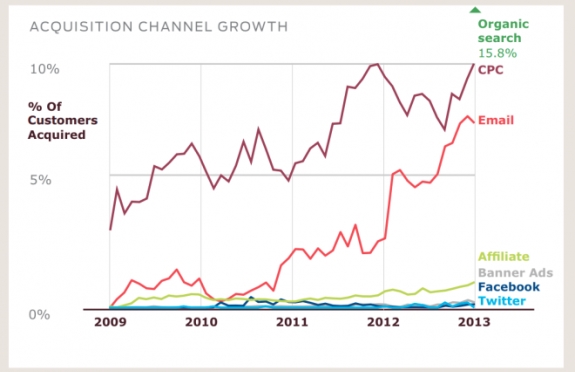
Trend in performance of digital channels for acquiring new customers
Custora came up with these figures by analysing data from 72 million customers shopping on 86 different retailer sites. They tracked where customers were clicking from (email, Twitter, Google, etc.) and what and how much they bought, not just on that visit but for the next two years.
Over those two years, Custora found that customers who came to retailers from search were 50 percent more valuable than average. In other words, they were more likely to shop more and spend more. Email customers were nearly 11 percent more valuable than average. Customers who came through Facebook were just about average. Twitter customers, meanwhile, were 23 percent less valuable than the average during the two years following that first click.
I've written before that our reluctance to spend clients' money on banner ads is based on one amazing fact: you are more likely to win Lotto than click on a banner ad.
In comparison to these digital channels, research by the Direct Marketing Association shows you may still be best served with good old direct mail:
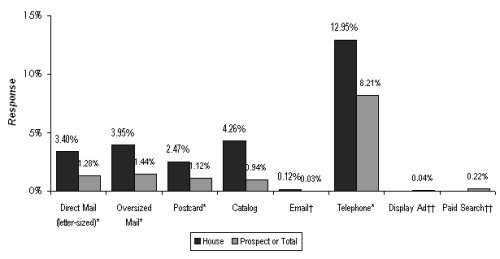
Average response rates for direct sales, DMA 2012
There is one new piece of research though that ultimately makes the discussions about differences between media effectiveness become a secondary consideration. It's proof of what many of us have always suspected.
How you craft your message is more important than the medium
The latest research into advertising effectiveness in Australia has proven creativity makes a big difference. The Association of Data-driven Marketing & Advertising shows that after 12 months ads with better ideas are both more effective and increase a brand's ability to harden pricing.
This reminds us you’re potentially wasting your time and money if you don’t get your pitch right. As consumers we remember big ideas, like “Think small.” Or the pulling power of a well crafted headline like “It’s Time.” Or a picture worth a thousand words...
The truth well told has been proven yet again to be more important in getting the best ROI from your marketing than any optimisation techniques digital specialists may dazzle the bean counters with. We are not animals, we are human, and we respond to emotions, not numbers of targeted exposures.
For those who want to make the most of their investment in airtime/space/or face-to-face, remember to invest a little in the art of communication.
It's not just consumer brands that can benefit from better communication
An ability to express your message is just as impotant for both service businesses and B2B. This is especially true for financial services, as shown by this chart of what customers say are the most important qualities in a financial adviser.
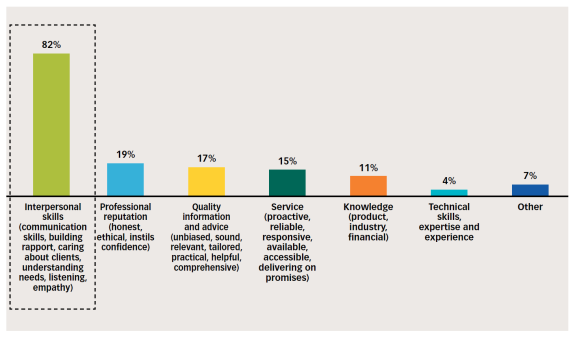
AFA White Paper: The Trusted Adviser May 2013
The report found the biggest difference in success of the top 10% of financial planners and the rest isn’t expertise, or credentials or technology – it’s the ability to communicate. Communication is not talking at people, it's the art of speaking with empathy. This is where social media excels. Use it to listen to your customers, then respond in a way that makes the individual believe you understand where they are coming from.
Irrespective of digital or traditional, face-to-face or in writing, where you have the conversation is secondary to the way you express yourself.
Just remember to make the message suit the medium. Our burping cow ring tone for Sipaah was downloaded by lots of kids who knew exactly where our brand was coming from.
Read MoreFame is the game of the name


The exponential pace of change is increasing the pressure on businesses to stay competitive. You know it’s not going to slow down. Fortunately there are still ways you can take control. One proven method is to revisit some simple building blocks to help make your brand relevant in today’s complex marketplace.
4 step process to make a challenger brand famous:
GAME
NAME
FAME
CLAIM
Game:
When did you last define what it is you do you do that makes you a specialist. In a cluttered business environment it pays to play in a defined niche where you know more about the rules of the game than your competition. Define the things that are of value to your prospect. Make sure you understand what it takes to be world’s best at your game, and work to stay at the top. People will still pay you a premium for something special that means something special to them.
With a fresh outside perspective, define your true differentiators, your “authentic truth.”
Name:
Your reputation, the brand and everything it does must be aligned with what you do that is special or your efforts will be diluted. Today, any business with integrity can compete against established incumbents. The cost of entry is no longer big budget mass media campaigns, the spoils now go to the nimble.
Today, the truth is what counts, the public can find the facts faster than businesses can attempt to shape opinion. Ensure your brand reflects your truth in everything you say and do.
Fame:
The art of being noticed. And remembered. And talked about.. You can do this several ways. Spend a lot of money, like Swisse, who invested up to 60% of annual revenue to marketing to achieve business growth, which stands at about 50% year-on-year over 4 years.
Or take the stand out in the crowd approach. An elevator pitch is only of value if people are listening, be too polite and you will be invisible. There is something to be said for the fart in a lift approach, however can you risk going viral with the wrong tone of voice?
Ideally, you can take the hero approach: be noticed by the right people for the right reasons. To do this ensure you choose the right medium for your message. There have never been so many communications options – a pitfall for the unwary, and an opportunity for the savvy
Claim:
Tell the truth, especially now the customer can search the Internet to discover what is a genuine claim and share with their friends what they find out. Decide what will differentiate you in your game – do you do it faster or smarter, cheaper or better?
Then find a creative way to express your difference. As J Walter Thompson said almost a century ago, “the truth well told” is the value add of great advertising.
Famous campaigns start with a defined customer benefit
What’s your “Which Bank?” How will you enter the vernacular, as this one of mine did 25 years ago:

With a creative leap, you can express the human insight that will resonate with your prospects. And they’ll repeat it to friends, again and again.
Read More
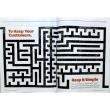
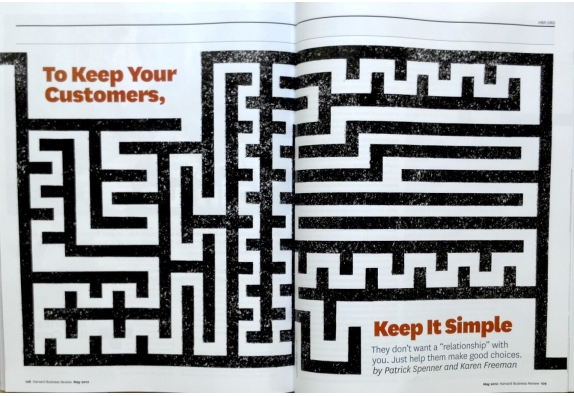
How do you explain to the manager who signs off your budget that today customers want more from your website than a brochure online? You can start by pointing out how you can replace existing fixed and recurrent costs with keener priced digital alternatives. Then remind the cost controller that technology is moving so fast they’ll be surprised how much more you can do today for less. A lot less than many of the savings to be made across existing business practices that digital can now enhance or replace. This 12 point digital checklist can help you keep it simple and the returns substantial.
Your digital project 12 point checklist
Keep an open mind, what the site needs to include is based on what the customer wants, don’t limit scope by prescribing whats to be included by your what your preconcievd ideas of what the competition have already done.
Engage with the user in the context of where and how they are accessing you. Are they on a mobile while in a shop, in bed on a tablet or at their workdesk on a PC? At work, at home, on the move, your site experience needs to change accordingly.
Educate or entertain? Ask yourself are they visiting your site to learn more, or simply because it is an enjoyable experience? Or would they like it if you did both? Deciding this helps shape your content and navigation.
Personalisation. "Allow users to personalise their experience. People love to add personal touches because it helps them feel at home and in control. Provide sensible, beautiful defaults, but also consider fun, optional customisations that don't hinder primary tasks." - Google Android
If you don't treat each customer as an individual, a competitor will. Technology now enables you to serve each visitor exactly what they want, a bespoke site just for them.
Innovate.The digitisation of everything now allows you to reinvent so many of your business functions and methods, take advantage of what is now possible.
Tone of voice is more important than what you say. The way the site looks, the colours used, typography, whether there are pictures or videos and the style of vocabulary you use will make a bigger impression about your brand image than what is in the text.
Services is what you build today, not websites. "Our service doesn’t begin and end at our website. It might start with a search engine and end at the post office. We need to design for that." - GOV.UK
Iterative, our most used word to describe our process for scoping, designing and building a digital service. Start small, constantly evolve and develop the service offer. We learn and improve the offer together as we go.
Marketing. A site without marketing is an island resort that’s not on any map, let alone an itinerary. Don’t launch and leave, have a plan that will drive customers and prospects to your site, align what the promise is and how your site will deliver to expectations.
P, there are 4 of them in marketing: Product, Price, Promotion, Place. Consider which of the Ps is most useful to enable you to best engage with each type of customer. The 4Ps of marketing aren’t all the same for every person or every occasion.
Load time is more important than looking good. Too many fancy things can slow down the experience.
"Make important things fast: Not all actions are equal. Decide what's most important in your app and make it easy to find and fast to use, like the shutter button in a camera, or the pause button in a music player." - Google Android
Effectiveness. Know what you want to achieve and why. Most importantly decide how you will measure with meaningful metrics that can be acted upon. Then you can build in measurement techniques to track what is working and what needs to be improved. And make sure someone is in charge of tracking results and implementing improvements.
If in doubt about what matters most, remember the customer's perspective comes first. Look at the first letter of our 12 points. In an increasingly complex world, when you connect with customers they will appreciate it of you can KEEP IT SIMPLE.
Read MoreRadioactive ads from when people didn't know better
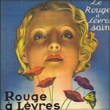
Classic ads from 1910-1930 for radioactive products
What can’t radium cure? A century ago it was legal to advertise radioactive products, from toothpaste to suppositories, condoms and check out the chocolate!
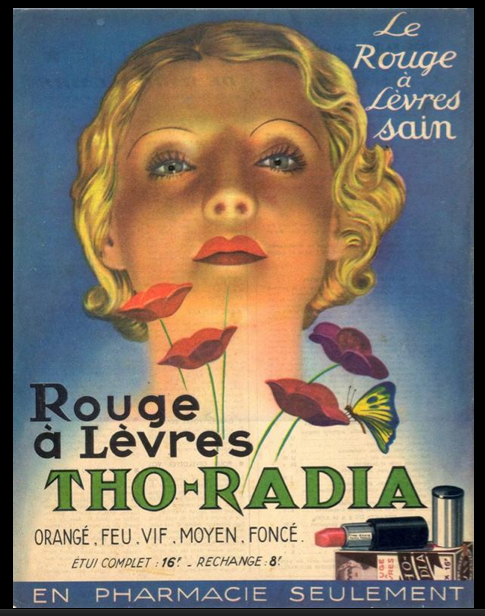
If looks could kill: Radium lipstick advertisement from the 1930s. (via 109.com)
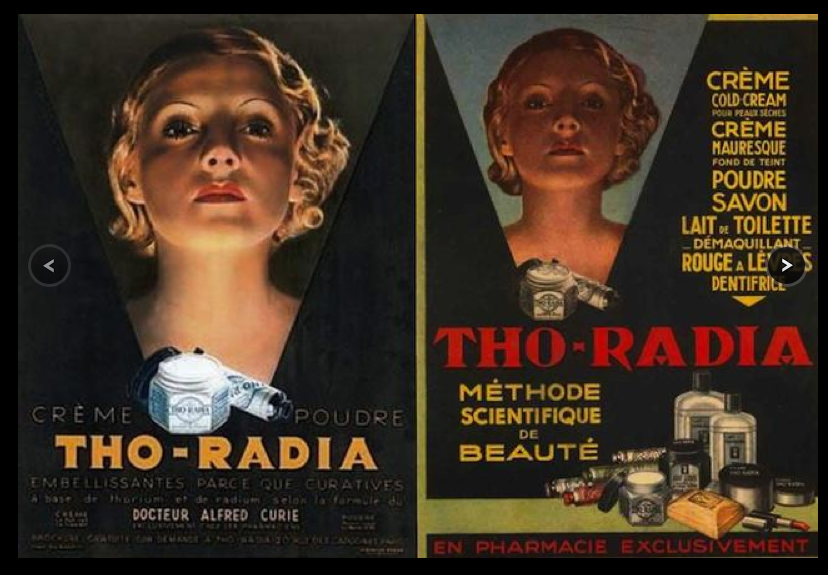
More classic ads from the 1930s for the Tho-Radia range of makeup.

Nil by mouth, guaranteed harmless?!! Gives new meaning to "the ring of confidence"
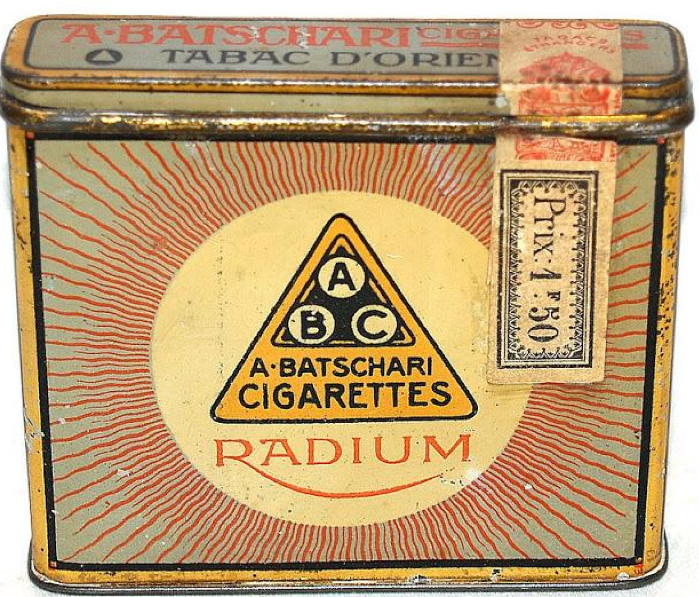
Anyhow, have a radium.
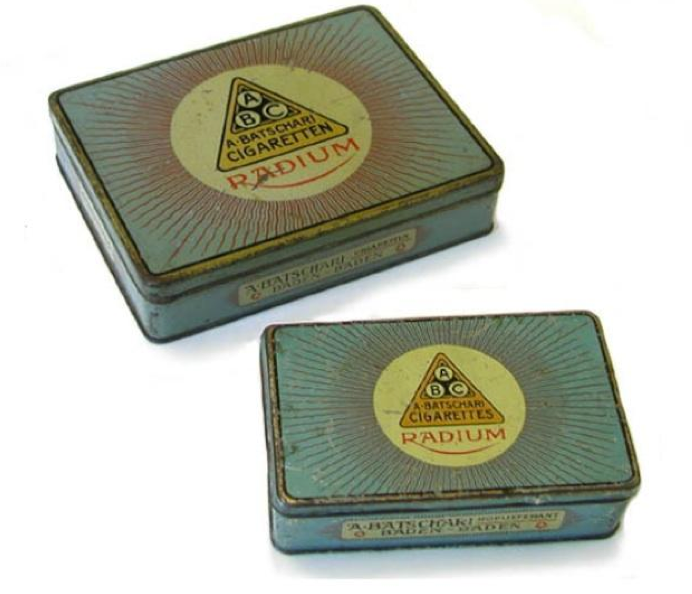
Now in a convenient pocket size pack of 20s. They didn't know smoking kills.

Mrs Marsh could give us a demonstration of the brighter effects on your smile of Radium toothpaste.
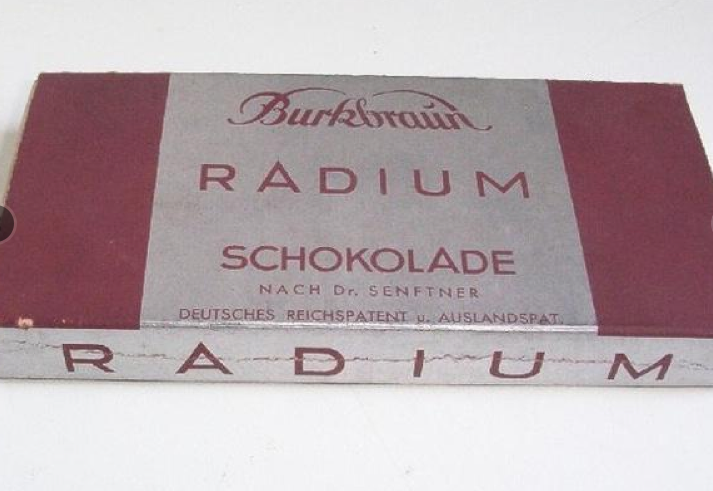
Chockaholics aren't left out, Radium is everywhere. The ads claimed eating a block would make you look younger.

Time wasn't on the side of those with radioactive numbered watches that glow in the dark.
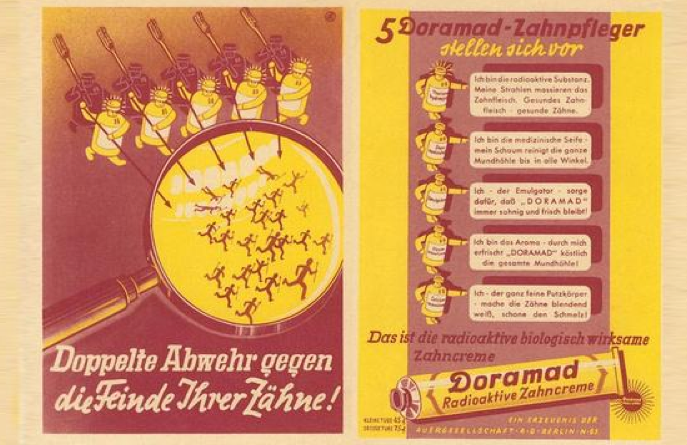
Another ad campaign competing for share of the toothpaste that glows market, now with added thorium.
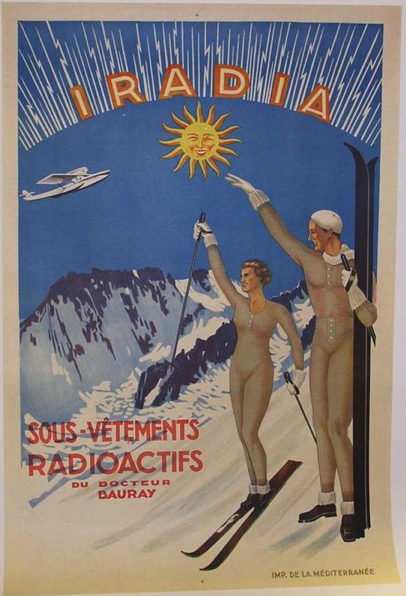
Radioactive wool keeps you warm on the slopes.
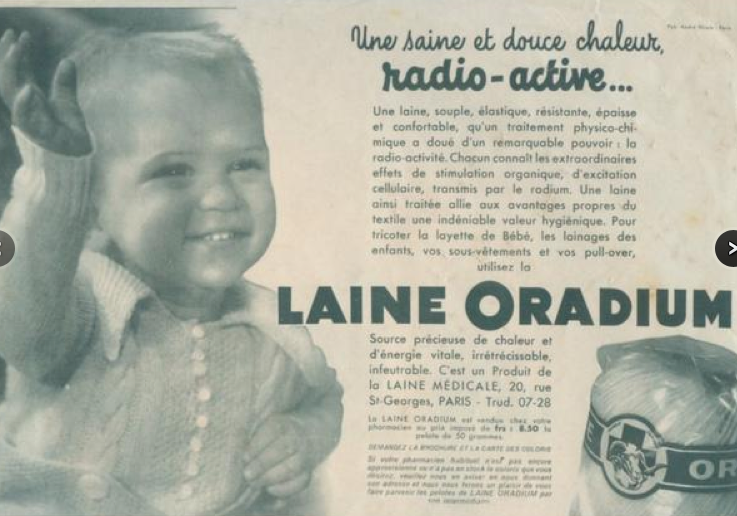
Dress your baby in it.
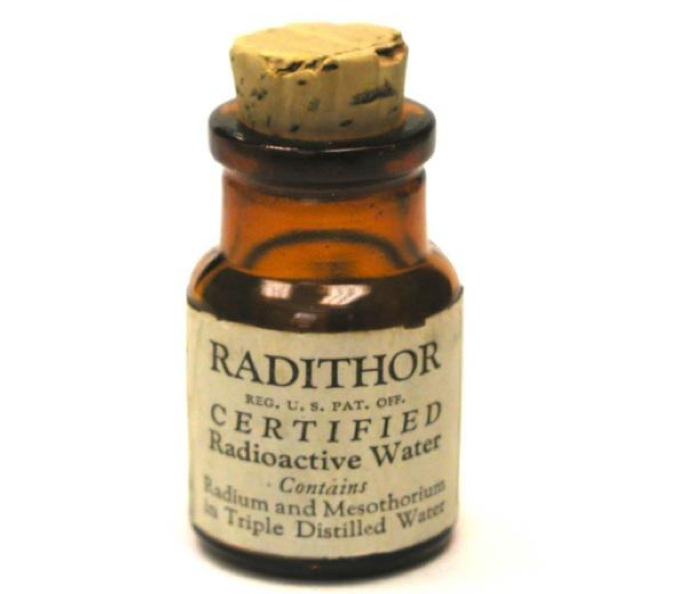
Advertised as a cure for arthritis, rheumatism, mental illnesses, stomach cancer and impotence. (via Real Food University and Oak Ridge Associated Universities) Triple distilled, who needs a whickey chaser?
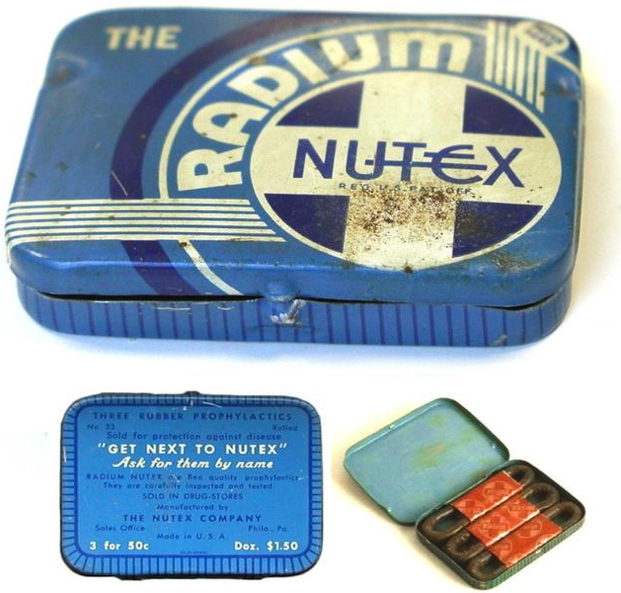
Condoms, that glow in the dark?
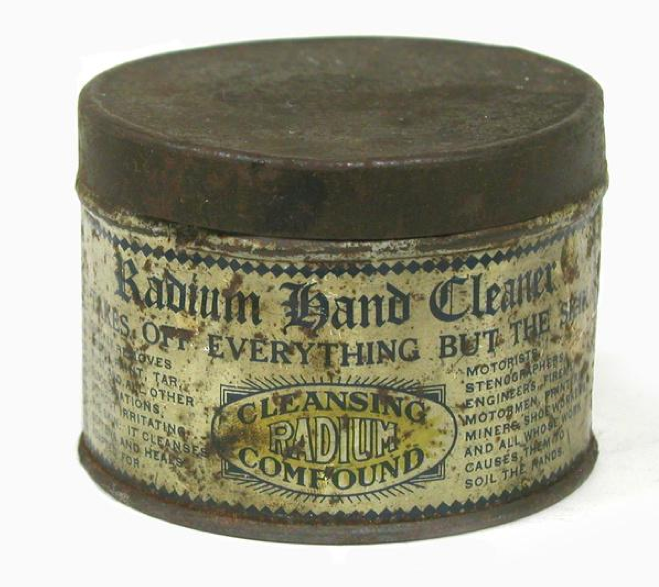
They didn't realise you can't wash off radiation poisoning.
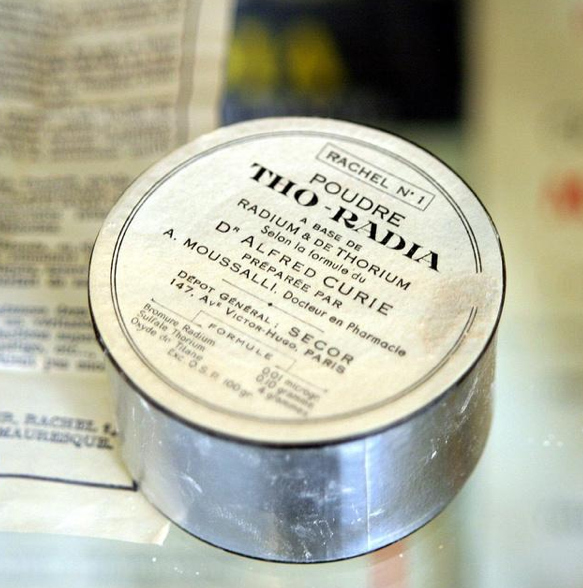
Dr Curie started something big. Cosmetics companies continue to claim they have the secret to eternal youth.
Like to see some more classic ads?
Have a look at 12 great vintage politically incorrect ads for Christmas gifts.
Read More
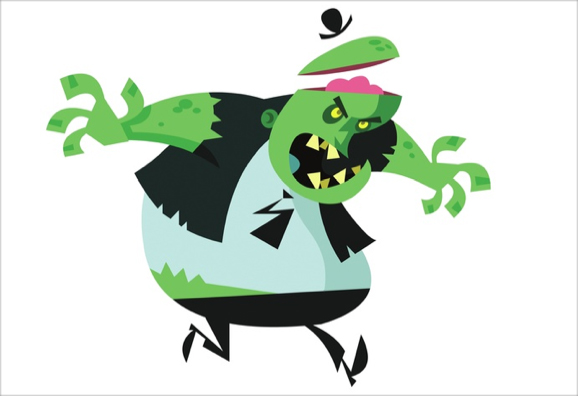
Everyone knows the way to lose weight is to eat less and exercise more.
Yet year after year most Australians are getting fatter. Fatter people aren’t as healthy. Fatter people die earlier than fitter, leaner people.
A whole industry makes money out of fat. Fitness clubs. Personal trainers. And diets. None of it works over time. The stats prove it. It’s not enough to know you have a problem. Personally I have never been better educated, yet I’ve never been so overweight.
Science has shown only cognitive behavioural therapy ensures long-term positive change and a healthier longer life as an ex-fatty. 21 days of mind reprogramming is just the start to breaking the usual fatso habits.
Business as usual doesn’t work. How long till the business you work for dies?
Australian businesses are fat. They aren’t fit enough to cope with today’s rapid pace of change and increasingly complex issues. They don’t exercise their brainpower by trying something new. And like most of us with a weight issue they are looking for the quick fix. So they outsource it.
The diet industry equivalent in this instance are the service providers, from the Deloitte pre-prepared meal programs and the peddlers of management boot camps, to the efficiency fitness trainers selling the benefits of Sigma 6 and Lean. Even the language is the same as The Biggest Loser.
The answer for struggling businesses isn’t in doing the same things more often, or paying more personal trainers to lift your motivation. Nor is it enough to reduce the excess fat by cutting costs. Stomach stapling the business results in staff suffering reflux, hunger pains and mental stress for no performance improvement.
The answer is cognitive behavioural change.
The answer is developing an innovation mindset.
Here’s how it works and why most businesses are doomed to die early.
It starts with the owners of the business recognising they have a problem. An attitude problem. Their brains have been thinking the same way so long their synapses have turned a well-worn groove into a rut of superhighway proportions. The problem is, it’s now a road to nowhere.
The new business opportunities aren’t where the brain has become accustomed to drive to, every category is seeing their marketplace become a ghost town. Today’s marketplace is somewhere new, and management not only don’t know where it is they don’t have a map to show them how to get there.
The new destination is growing, profitable and exciting. It’s enabled by the Internet and feeds on new ideas made possible by software as a service, unified comms and the cloud. The new place isn’t a city or a country or a category, it’s everywhere and anywhere the customer happens to be, 24/7. Now every customer or prospect can pick and choose what they want via a mobile device. From cat food to cars, retirement plans to restaurants, you can research and purchase without talking to a salesperson.
Yet business owners continue to think the value of their business is existing fixed assets and legacy systems, current supply contracts and distribution arrangements, proprietary processes and procurement systems. Australian managers continue to tweak a little here and there around the edges of their business models. Generally, the bigger the organisation the more cholesterol blocked the arteries of internal management and external communication.
Figuratively speaking, fat dead men walking the corridors of offices around the country are about to be knocked off by fit and nimble female and new age male entrepreneurial thinkers who are open source and open minded.
So what do our business leaders do? They buy another diet book, like the biography of Steve Jobs. What they don’t realise is reading about Apple is as relevant to middle managers as middle aged men reading about Usain Bolt’s exercise regime. Apple was a challenger brand from day one. It was in the DNA.
The answer isn’t reading a book on what someone else has done. It comes from doing what hasn’t been done. It comes from the confidence to try something new with a willingness to fail. Accepting you’re likely to fail again and again. Because continuing to do what you do now is guaranteed to fail. While with every new thing you try your chances of discovering a winner increases.
Changing your habits and practicing to do what doesn’t come naturally, every day, is the proven method for success. It’s making a habit of taking small risks often so you don’t stand still and become another Kodak. The proof is in understanding how Fujifilm could innovate itself a future as a cosmetics company.
Memories might be priceless, they just don’t make money like they used to.

How a traditional business became a challenger brand
Fifteen years ago Kodak entered a death spiral, from a global peak in 2000, camera film sales dropped 90 per cent in 10 years as the digital revolution swept the world. “We’d known it was coming since the 1980s,” says Yojiro Yamashita, general manager of Fujifilm’s life science products division.
Kodak didn’t make it, going bankrupt last year. Fujifilm not only survived but emerged into the digital world of today with a series of innovative new businesses.
Fuji recognised what its’ true strengths were says Tomoyuki Yamazumi, a cosmetics industry analyst for the research firm Fuji-Keizai. “It had the financial power plus a strong marketing ability and existing ties to consumers.” One of the small risks Fuji management took was launching a cosmetics range in 2007. By 2010, sales of Fuji’s upmarket Astalift brand were already over $100million a year. By 2018 the company is looking to increase skincare and supplement sales by ten times that.
Look around your business. Are you a Kodak, or can you recognise your strengths, try something new and innovate your way to a future as a challenger brand?
This article first appeared in AdNews, 30/5/13
Read More

At CeBit 2013, Salesforce Vice President Vivek Kundra’s big question for Australian leaders is “how can a country of 22 million people compete in a world of seven billion?” His answer?
“It’s not about size. It’s going to be about innovation. Innovation policy and an innovation agenda have to bethe come building blocks of a nation that’s going to compete in the global economy.”
Third wave of computing is changing the global economy
Competition in the global world of business is being driven by a ‘third wave of computing’. Essentially the shift from hardware to cloud based software and services and super fast mobile broadband networks that allow consumers and workers to access data on portable devices. Our clients have seen a doubling of visits to their websites from mobile devices over the last year. In fact, this year more people globally will access the Internet from a mobile than a computer.
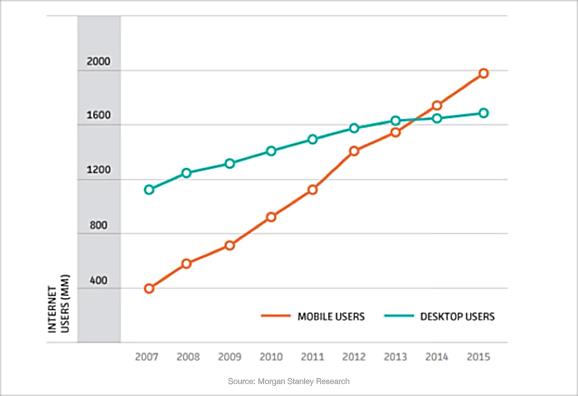
The opportunity for challenger brands
The biggest risk for businesses I’ve observed are the internal stakeholders defending their hard fought for legacy systems and infrastructure, and managers who are obsessed with efficiency through fine-tuning traditional methods. As Kundra points out, competitiveness now comes from letting go of what you’ve currently got now. “Most large scale organisations are still stuck in 1980s technologies. If you’re still stuck in an old mindset then unfortunately there’s a young entrepreneur who is imagining the way the world should be rather than it is.”
“The most amazing opportunities lie in reinventing entire sectors of the economy.” Vivek used the usual examples of US companies like Amazon, Netflix and Uber as businesses that are challenging categories today.
If you are running a business you have a clear choice he says – “do you want to be Amazon or Barnes & Noble?” This isn’t a particularly new view, as a global survey by Boston consulting summed up a couple of years ago, in this world of rapid change the spoils go to the nimble. Still, many managers still don’t seem to be responding.
“There’s a Darwinian spirit to the extinction of those who are holding onto the 1960s ways of doing business.” Vivek states, “not because it’s in the interest of the customer but because it’s easy and it’s because that’s what they know what to do.”
A marketer’s mantra for today: “The customer. The customer. The customer”
This is the biggest differentiator for challenger brands. “Companies that are embracing the third wave of doing business are doing it in the interest of the customer.”
Kundra recognises the fear of change within businesses when he suggests the best way to introduce a change culture is to build a prototype. “I think for too many people the expectations for transformative technologies is that it takes too long, costs too much and they’ve been burned in the past.”
A test and learn approach reduces risk
Last week at the launch of an AGSM Mid-Market program a professor specialising in innovation for business pointed out success today comes from having a portfolio of new initiatives that can be tested quickly in the marketplace. Rather than over researching only one strategy in an attempt to minimise risk, be willing to fail and fail frequently. The chances of some prototypes being winners with the customer will increase the more you try.
As Kundra says, aim to “be relevant and simplify the customers’ or citizens’ lives”.
Read More
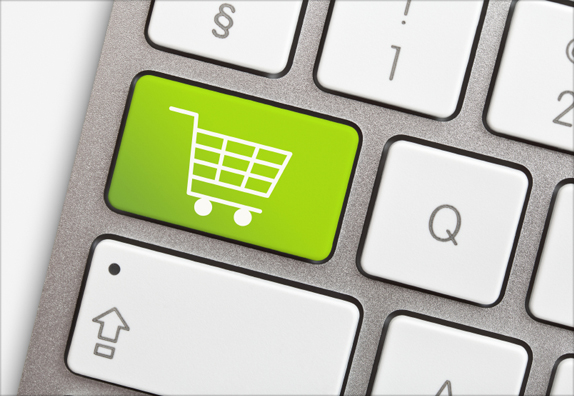
The latest statistics on online fashion retail sales, research on the main purchase driver for financial advice and a Californian think tank pricing model all give marketers strong reasons to reconsider Price as a useful tool.
Evidence 1: Online fashion sales prove price not the motivator
No wonder Australian retailers are scared of online stores. British online retailer ASOS recently revealed that Australia is its single largest foreign market — with Australians buying something from the ASOS website every 6 seconds. The latest research from Roy Morgan shows at December 2012, 7.6% of Aussies aged 14+ (or 1,430,000 people) had made an online fashion purchase in any given four weeks — up from 5.7% (1,062,000) one year earlier.
Online fashion-purchasing habits by Australian women by sub-category, 2011-2012
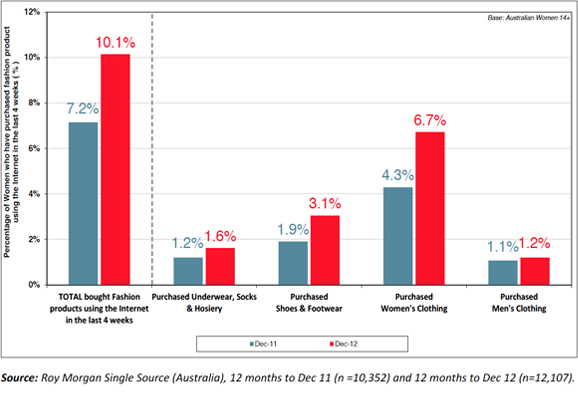
What is really interesting is the opportunities for marketers this research reveals. Most people would probably jump to the conclusion that these online sales are being lost by Australian stores because clothes are available cheaper from overseas. Everything on the web is cheaper, right? Well actually, no.
Roy Morgan’s research has found “scoring a bargain is not the main motivation for women purchasing fashion products online. Far more important is quality, with 75% of them agreeing with the statement ‘I believe quality is more important than price’.”
Discretionary spending by women on clothes has parallels with the way men seek financial advice. A recent national survey by an independent network of financial advisors found the vast majority of customers were more concerned about the quality of service and the frequency of face-to-face time they received than the size of the fee. Of hundreds of customers surveyed, price was rarely mentioned. Value was the primary concern, and the value equation was grounded in the perception of the quality of advice. .
None of this is new. I’ve been segmenting customers using the New Economic Order for nearly two decades since it was first developed by two Australian academics.
Evidence 2: choose who you want to be your customer
You can segment the population by three distinct sets which allow marketers to predict discretionary spending behaviour. The biggest segment, the Traditionals, sre generally cash poor with most of their spending accounted for with essential services, utilities bills, rent, transport and food. They have neither the capacity nor the predisposition to purchase discretionary items.
The other half has a common mindset, they share a desire to buy quality goods and experiences. This group is divided in half by their capacity to spend, one half are NEOs, and while they are only a quarter of the population they represent half all discretionary spending. Transitionals are NEOs on a limited budget: a career couple with one at home with a baby, or a high achiever that's just started their own business, or perhaps they have retired.
For 50% of consumers, the Traditionals, a cheap price is their opening and closing consideration. However these are the people who don’t spend much. They also deliver no sense of loyalty and don’t refer new customers. Every sale to a Traditional is a new sale that starts from scratch. And risks going to the lowest priced competitor on the day.
Most restaurant and airline customers and B2B purchasers are NEOs. These people research purchase decisions on the basis of what they believe are the features and benefits that mean the most to them. Price comes LAST, and isn’t much of a deal breaker.
Those latest stats on online fashion sales make sense in light of NEO behaviour. NEOs are online researching what’s hot in the world of fashion. In fact, it’s where they do most research when considering any major purchase because it’s where they control the levers, avoiding the unsavoury hassle of being sold by a salesman face to face. While Traditionals continue to spend the majority of their clothing budget on essential items like socks and undies in stores when the sales are on, NEOs continue to buy more discretionary fashion items, more often, both from the Internet and instore.
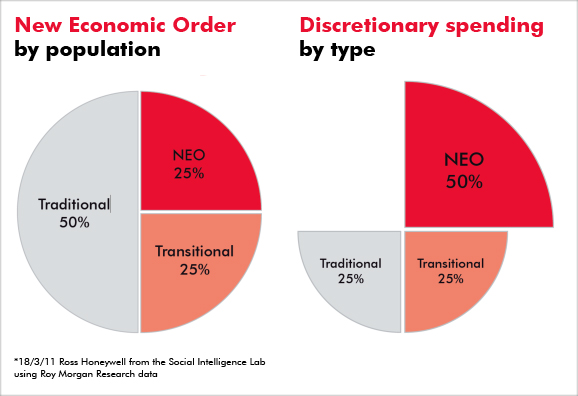
So what’s the best marketing model for selling to NEOs?
Evidence 3: all value is subjective
According to Ron Baker, the founder of Californian think tank the VeraSage Institute there are two fundamental approaches to pricing:
Cost-Plus Pricing
Labour Theory of Value
Product » Cost » Price » Value » Customers
Pricing On Purpose
Subjective Theory of Value
Customers » Value » Price » Cost » Product
You can see how subjective value pricing turns the order of cost-plus pricing on its head, by starting with the ultimate arbiter of value – the customer. In Baker’s words: “Goods and services do not magically become more valuable as they move through the factory and have costs allocated to them by cost accountants. The costs do not determine the price, let alone the value. It is precisely the opposite; that is, the price determines the costs that can be profitably invested in to make a product desirable for the customer, at an acceptable profit for the seller.”
As a marketer, for decades I found software one of the simplest products to approach from the Pricing On Purpose model; it’s the only reason Microsoft had education, standard and professional versions. The mid range product best reflects a fair margin for the cost of production of the product. The same product is then also sold at a low entry price with a few features turned off to maximise sales volume at the low end and repackaged in a fancy big box with a few extra features to maximise margin at the upper end of the market.
Choose who you want your customer to be, only then pick a marketing P
Whether you are selling clothes or cars, fair trade coffee or boutique wine, building materials or investment services, remember when your sales force wants you to discount, ask them to stop and think about the customer. Are you selling a basic product to a student, an authentic experience to a Transitional or a professional service to a NEO? Agree with sales who your customers are before you decide to use the PRICE lever.
Depending on who your customer is, Product, Place or Promotion may be more valuable to them than Price.
Read More

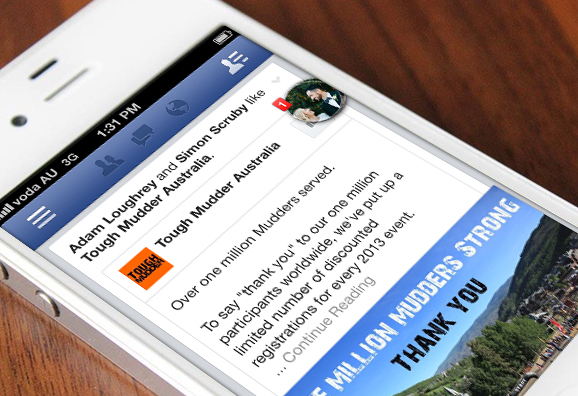
Just being active on Facebook isn’t enough. As with any communications medium, there are smart ways to achieve more for less effort.
Don’t be baffled by social media marketing spin doctors. Sure, Facebook has it’s own set of best practices. Hopefully by getting to know what matters and what doesn’t you can ensure any supplier will make the most of your investment.
The key to making the most of Facebook for your business is understanding it’s all about making sure everything you do improves your chances of being seen.
Much of this isn’t about paying for black art, it’s about basic step by step craft.
40% of time on Facebook is spent on news feeds
Only 12% is spent on profile or brand pages. So:
- Post articles on other people’s pagesPost on less pages more often
- Choose pages with high numbers of fansPhotos have higher ranking than links or text
- Use images
- Keep your text posts short – between 100 to 250 characters get 60% more engagement
- Ask a question
- Post daily and frequently
- Post about relevant topics – don’t push the brand
- Test your audience for their engagement times – 18-24 year olds are most active 9pm – 10pm, women 25-45 even later
How edge-ranking works is the key for marketers
All of these individual steps are only important because of something called edge-ranking. This makes or breaks social media marketing. This infographic shows how it works.
Read MoreThe health checklist for your sales process

15 questions to help your business determine the focus for your sales activity.
Do you have a sales department? Here are 15 questions to help change your sales force from sales takers to sales makers:
- How much time are you investing in new business a day?
- Is the total revenue and the sum of your clients’ budgets growing more slowly than in the past?
- Will growth levels come from present client budgets?
- Where will growth come from?
More frequency of purchase
More volume of each sale
More value? Up sell/or cross sell? - Will growth have to come from new business won from competitors?
- How do you sell to prospective clients?
- What’s your process?
- How do you find them?
- How do you win them?
- How do you prioritise sales calls?
- How is a sales call pre-qualified, (telesales/email/CRM)
- How long is spent face to face?
- What is your conversion rate?
- Is the sales call to the final decision maker?
- Who is the primary decision maker, how are they managed?
ROI marketing can help improve the performance of any of these sales metrics.
Marketing can speed sales, pre-qualify and build loyalty once you’ve made a sale.
In the past business owners were frustrated by an inability to measure what worked and what didn’t. Today there are tools and technques to enable you to measure the return on your marketing investment.
Read More
The Lynx effect: Marketers need to help business managers focus on the long term.
Yes, the world is experiencing rapid change and it’s accelerating. However with the average tenure of management in companies constantly getting shorter, retained knowledge is being lost and long term plans are often abandoned before they have a chance to deliver returns. Short termism is rife, sales managers will always tend towards a quick fix to get orders in this month, and financial controllers will naturally be looking for new ways to reduce spending.
Yet the bottom line is it's the businesses that invest year after year in building brands that create the most wealth. The chart below compares the S&P 500 index performance, the blue line, with businesses that own stronger brands, the green line. It proves the businesses that invest in brand building ultimately generate more wealth for shareholders.
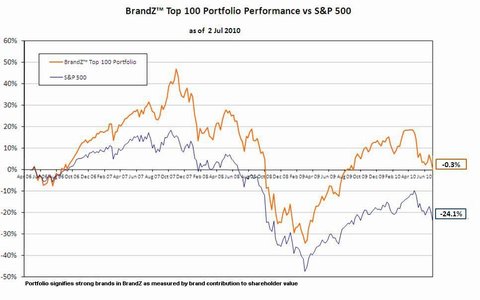
Leading brands outperform the sharemarket
A great example of how building a brand over time makes more money is to look at the work BBH in London did for Unilever. The creative leap of saying a deodorant could make a man more attractive changed the dynamics of the market category. The ad agency took an also ran product to a profit powerhouse over 20 years with the one consistent creative idea; “The Lynx effect”.
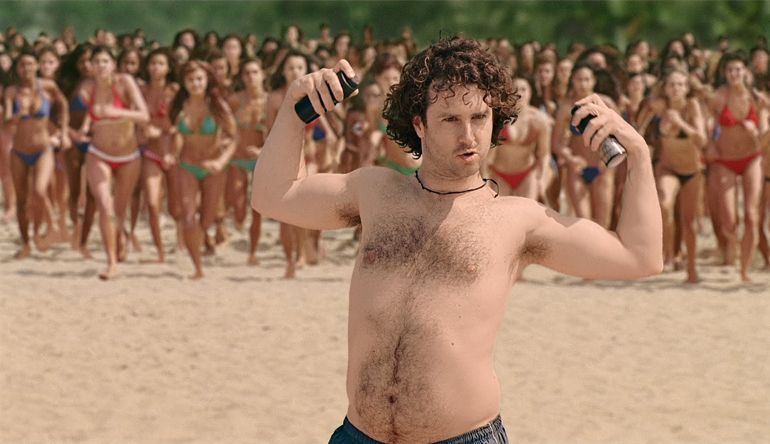
Founder of BBH Sir John Heggarty says “All we did [back in 1995] was change the thinking. It’s more than a fragrance – anyone can make a fragrance – it’s actually about the marketing.”
"I fundamentally disagree that advertising is just selling people stuff they don’t want. I believe that you have to create a competitive advantage with creativity. It seems obvious but I spend so much of my time trying to convince marketers to be more creative.”
Marketing is more art than science says the global advertising guru
Last week in Sydney Heggarty told a room full of businesspeople and advertisers “you all want it to be a science, to get the equation right and go home. But selling stuff has never been a science, it’s about persuasion and it’s an art. It will never be a science. It’s important to remember that we’re all creative. If you’re in marketing, you’re creative.”
Branding today is worth more to a business than ever before
Here is the proof for the finance department. According to Millward Brown Optimor’s analysis, in 1980 virtually the entire value of an average S&P 500 company was comprised of tangible assets (computers, factories, inventory, etc). By 2010, tangible assets accounted for only 30 to 40 percent of a company’s value. The rest is intangible value, and about half of that intangible portion, close to 30 percent of total business value, is attributed to brands. Does your CFO treat your own brand as your single biggest asset?
It truly is the era of creative destruction. ROI marketing is one of the few tools left that can still make a difference and consistently drive business growth. It's worth investing in your brand if you want long term returns.
Read MoreHow many ads do we see a day? Do you remember any?

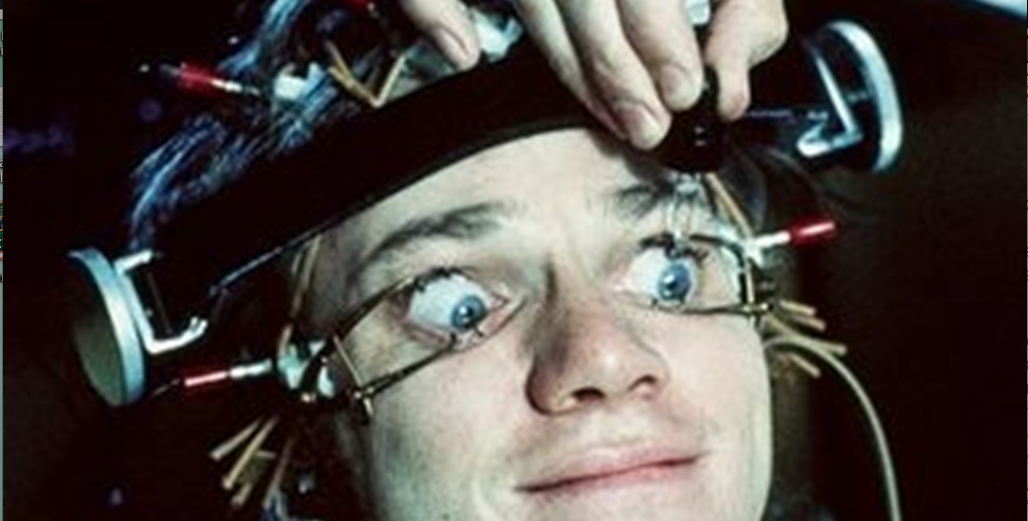
"We've gone from being exposed to about 500 ads a day back in the 1970s to as many as 5,000 a day today."
Jay Walker-Smith, Yankelovich Consumer Research
Hard to believe? Well, if you include the brand label on your undies when you put them on in the morning to the box your new tube of toothpaste came in that evening you can conceive you are exposed to branding messages thousands of times a day. This researcher also counted all the junk mail you probably don't read. But 5,000 ads?
A more reasonable figure for the marketing messages you see and hear daily is probably in the hundreds. Think about your average day, from the traffic report brought to you by Bob Jane T-Mart, the bus back for some show at The Star to the flyer for a Thai massage thrust in your hands as you walk past the poster for all-you-can-eat ribs on Wednesday nights. Then a barrage of down down retail ads on the TV during My Kitchen Rules, sponsored by some diet program. And those meet women in your area now!! ads on the side of your Facebook page late in the evening? What’s that about?
Whether it’s 300 or 3,000, we see so much that we register very little – and remember even less.
So if you were advertising your business don’t you think it might be wise to be distinctive and consistent enough to be recognised for something? Of course you would. So why is it most marketing communications is neither memorable nor consistent? Why doesn’t Qantas still call Australia home?
Why would an insurance company kill off its leading actors?
I can understand why an insurance company is killing off a 3 year ad campaign featuring Rhonda who now has a full time gig in a soap, but why did they drop the memorable jingle earlier? What have they got left to ensure we remember their brand? Who was that insurance company you may well ask? Ahhhhh, Allianz? No, when I double checked it was AAMI. You'd be forgiven if you haven’t been paying attention. Instead of keeping the sign off, "Luckyyyy, your with AAMIeeee", the ads no longer end with the sound of the jingle we’ve grown familiar with over 15+ years. Wonder why?
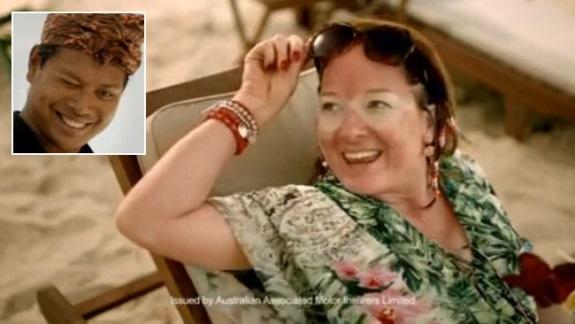
The average tenure of the CEO of an ASX 200 company is around 4-5 years*. The head marketer changes almost as often. Those brand managers on their way up move through more often, leaving behind their mark like my pug does on street posts. Which explains why the labels on all those Lindemans wines changed so often over the last decade. Southcorp then Treasury have destroyed so much brand equity because there were no custodians with a strong thread of brand DNA. Then each new agency wants to make its name, often at the expense of the advertiser.
Why will anyone remember your brand?
I was part of the team that created the "Which bank?" campaign for Commonwealth. It outlasted my time at Saatchi and survived a change of agency, despite their attempts to get rid of it. Brand building is like compound interest, you add a bit every year. And after a while it’s worth a fortune.
'Oh what a feeling' to be a copywriter for Toyota, knowing whatever the concept you come up with, the last 25 years of ads ensure the jump at the end will guarantee recognition by a half asleep viewer. Which is why the most successful marketing campaigns are the ones with legs. They go on and on like a Duracell battery.
It’s a fine balance between testing the new and stretching the offer without breaking the elastic brand. Some brands get it right. While there have been numerous small tweaks and occasional lapses, the VB can and the Coke dynamic-ribbon have survived decades of personnel changes. Less strongly managed brands seem to change annually. So when clients tell me they are getting tired of their campaign or their tag line or the font of their logo, I like to check if it’s busted first.
Sure we live in a world of rapid change, however, it’s more likely business survival and growth will come from product and service innovation and smarter marketing techniques, not from a new typeface. It may be a better strategy to refresh and re-launch rather than completely start again if you want to hold on to some rare customer goodwill. You’re doing well if they already have a small place for your brand pegged out in their cluttered head space.
Mortein tried to kill off Louie the Fly, but after over 50 years the public would have none of it. As John Laws used to say, when you’re on a good thing, stick to it.
Here's a Louie the fly ad from 1962
* Source: A Booz & Company study shows 23.5% of CEOs of ASX 200 companies left in 2011. Median tenure is 4.4 years and falling.
Read MoreThe top 20 valued brands in 2014
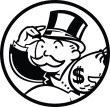
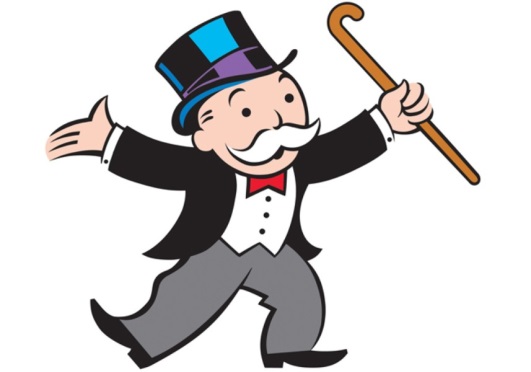
The world's most valued brands include some surprises. Coke is no longer it, in fact in the last year the brand value of Coca Cola has actually shrunk by 1%. Might not sound like much, but we are talking US$50million. A few more great ads like they used to make could have made a big difference to the bottom line. While there's a lot to lose there is a lot to be made by building a brand.
Innovation and marketing build brand value
Consider the year on year growth of Samsung as it continues to invest in product innovation and marketing. Now the number 2 in the world by brand valuation, Samsung increased it's value by US$20 billion over the last year. Coke slipped from number 9 to 12. Check out US telco Verizon, up from 10 to 5. Expect to hear more from them in Australia.
What are the highest valued Australian brands?
The value of a brand can be greater than the parts and isn't necessarily a reflection of the relative size of the business. While Australia's largest listed company by share market value is BHP, it doesn't rate on the scale for the book value of it's brand. The business with the highest valued brand in Australia is Woolworths. Woolworths sold $21 billion of food and liquor last year. The Woolworths brand is now ranked just outside the top 100 global brands and is valued at US$10.8 billion.
Racing up behind in second place is a newly invigorated Telstra which has re-invested, refreshed and relaunched it's brand over the past couple of years. The several millions spent on marketing has been rewarded, Telstra jumping 34 spots globally with an increase in brand value of over US$2.2 billion.
The banks brand valuations aren't the same as their market cap, but the shifts in brand value are a leading indicator of performance. ANZ is the smaller of the big 4 banks yet it has had a higher brand valuation for the last few years. But it's slipping, which helps give us an idea of which bank will grow faster in the coming years. ANZ, NAB and CommBank are all losing brand value and Westpac is climbing as they leverage stronger brand appeal to hold and grow customers.
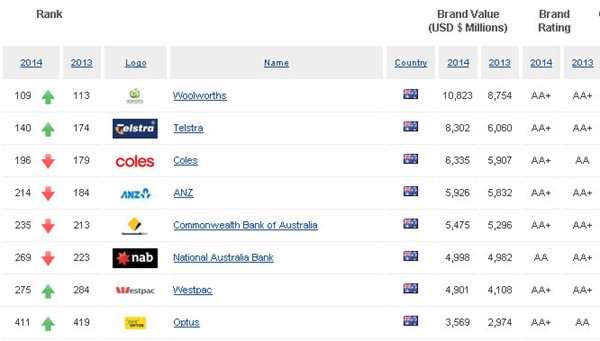
So when you're in the boardroom discussing the pros and cons of discounting to drive sales or investing in marketing, show your peers what a difference a brand makes to the bottom line.
Read MoreThe business benefits of a strong brand
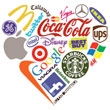
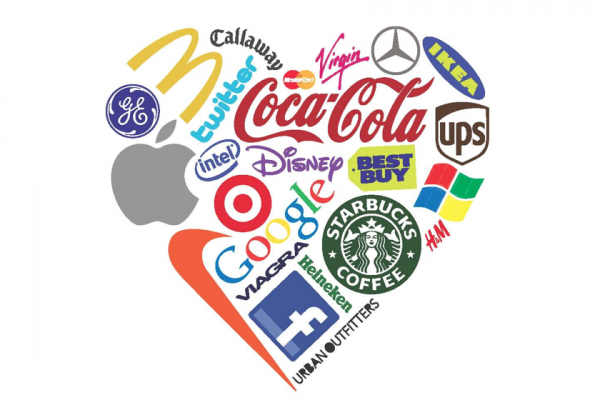
Remember just over a decade ago when IBM only sold big computers? Today most of us have more computing power on our smartphone and IBM is a consulting services business. UNO helped IBM make the transition to a service provider to mid-sized Australian businesses with a 4 year content publishing programme.
Many brands are having to change to survive
A few years ago if you wanted to find a business service you looked up the Yellow Pages. And if you wanted to make a call when you were out of the office you had to find a pay phone. It's amazing when you stop and think about how much the Internet has changed the way we do business.
Some once mighty brands like Kodak and Darrel Lea have disappeared, while others have successfully transformed what they offer. Have you taken the time to reconsider what your brand stands for in today's competitive market?
A brand is more than a name and logo
Your brand is what the public thinks you stand for. How you present your business shapes how your brand is perceived. Your brand is how your customers feel about you – the impression you make. It's how you look and how the way you speak. It's the unique way you reveal yourself to customers, from your choice of words to the typeface and colours you use.
If your business has been around for a decade then what your business does may no longer be well represented by what your brand is representing. Today's brands are distinctive yet flexible. Consider wWhat do Apple, Google and Virgin have in common? An ability to sell products and services across virtually any category by leveraging strong brand images that represent values that can be stretched as innovations are brought to market.
Strong branding is a smart business investment
Disciplined brand creation and consistant brand marketing is proven to deliver returns. Once you've differentiated your brand positioning, today you need to remember sales is no longer a linear pipeline, the power now lies with the customer. So for your brand to create wealth it needs to be discoverable across multiple touchpoints. With consistancy, the ROI from building a differentiated brand isn't just financial.
A strong differentiated brand enables the business to:
• Overcome competition based purely on price
• Prevent or slow decline of sales
• Hold on to existing customers
• Build sales leads
• Change perceived quality of your product
• Revitalise customer appeal
• Change company culture and boost employee morale
• Enter new markets
• Speed up product acceptance and trial
• Morally discourage competitors’ salespeople
• Raise capital more easily
• Sell a business more easily
See UNO's proven Formula for Growing Challenger Brands.
Read MoreWho owns the world's best known brands?

"Brands are intangible assets and account for, on average, 75% of the value of a company."
– Blake Deutsch
Investors don't value what businesses make. The sharemarkets around the world have placed the most value not on production, rather they value the power of brands. Most share prices are a reflection of the future earning ability of a brand. The brands people most recognise also get the most votes from investors.
Just ten global companies own a surprising number of the world's best known brands.
From cat food to confectionary, shampoo to fragrances, each of these companies use their marketing skills to create shareholder value. As well as the dairy brands you probably associate with Nestle, the Swiss company also owns some of the most renowned brands in other diverse categories. Most people are surprised to see just how many categories just ten global corporations are active in. (View on Pinterest):
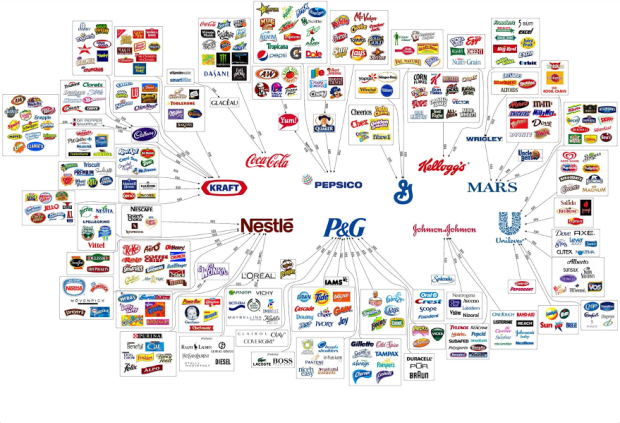
See larger image on Pinterest.
The big benefit of differentiating your brand is pricing power
The same marketing disciplines that are used to by Nestle to differentiate Kit Kat are leveraged by Nestle in other categories like fragrance. Georgio Armani Beauty is a Nestle brand, with Cate Blanchett its public face. Differentiation is why Nestle can charge a premium for perfume, Purina pet food and Nespresso coffee capsules.
In an Internet enabled world, where prospects can literally buy anything from anyone, it is now essential to differentiate your brand. It is differentiation that will ensure long term sustainable and profitable business.
Big brands have the world covered, which opens market niches to the nimble
The good news for challenger brands is the majors have slimmed down their portfolios over the last decade to concentrate on a smaller number of brands they can manage globally. So if you now apply the same proven brand marketing disciplines in niche markets you can most likely do so knowing there will be less competition from big global players.
As for Armani the fashion brand, it's still a family owned business with Georgio, it's 78 year old founder, still at the head. See how UNO grows Challenger Brands, including a number of successful Australian family businesses, just download our free eBook.
“Brands are intangible assets and account for, on average, 75% of the value of a company.” - Blake Deutsch - See more at: http://www.r-co.com.au/brand-building-for-business-success/#sthash.XGEEw6MT.dpuf
Who tweets about brands?
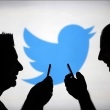
Technology companies get the most tweets
If Twitter users are image shapers, setting the trends in awareness in our society, it follows that marketers want to see their brands tweeted. Research by Nielsen has for the first time shown which brand categories are most tweeted, and who is doing the tweeting. Technology companies lead, followed by restaurants.
How to get people tweeting about your brand?
Be seen on TV. The age old adage, fame is the name of the brand game is underlined by the fact the brands people tweet about are the brands seen on what is still the world's mass market medium – TV. Perhaps this explains why the biggest brands still invest in TV advertising, it's the one medium that they can still use to shape mass opinion.
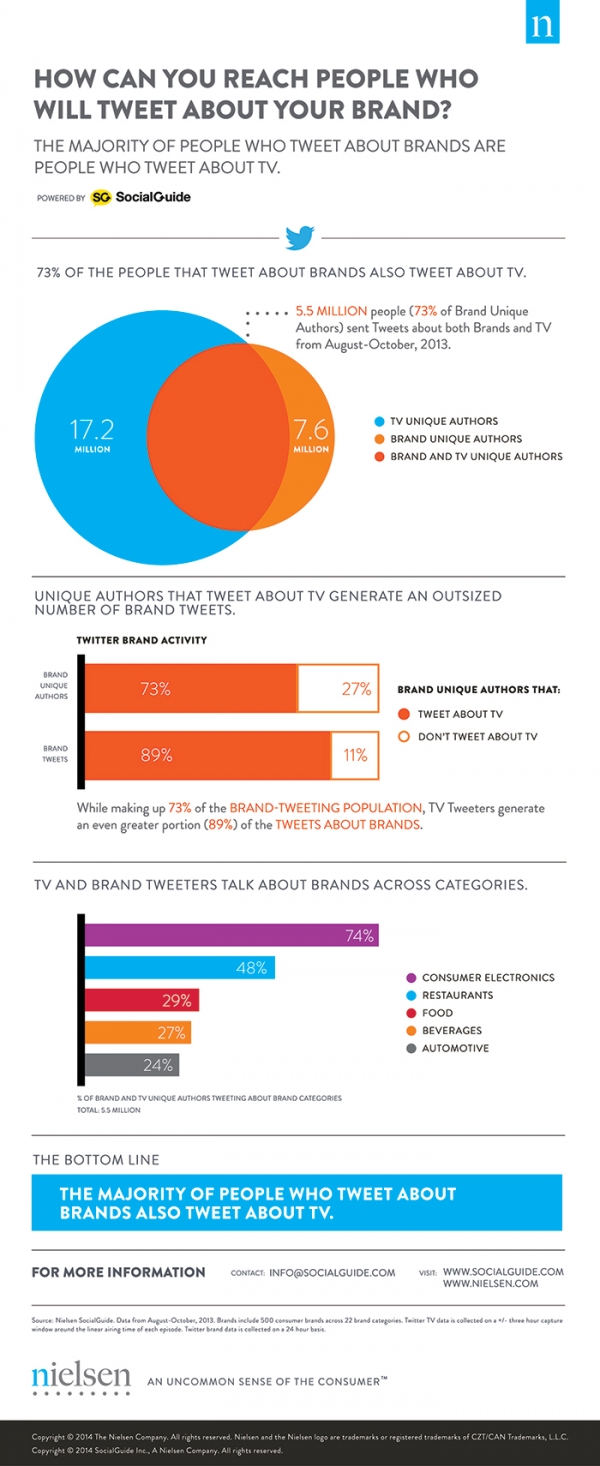
What Australians look for when shopping online

Myer missed the post-Christmas online retail rush, and it was BIG. On 1 January, The Australian Retailers Association put an update out on expected post-Christmas sales from Boxing Day to 14 January to be $15.1 billion.
You may have read Myer's site was down for over a week. CEO Bernie Brookes told shareholders it wasn't a big deal because online represents just 1% of Myers sales. I'd be wary of investing in a retail business that doesn't realise the importance of e-commerce.
6.4% or retail shopping is done online
In the year to November 2013, Australians spent $14.6 billion* on online retail. This level is equivalent to 6.4% of spending with traditional bricks & mortar retailers. Some discretionary spending categories are already well into the double digits for online sales. Despite Bernie's spin about the insignificance of his own online sales, in fact Myer's business plan has a 5 year target for online sales of 10%.
I've been brushing up on online retail best-practice
Those retailers that did get a share of the online post-Christmas sales rush now have stats on what worked for them. Fortunately we can all learn from what Australians did over Christmas thanks to a survey by Credit Card Selector of online gift purchases. Here are some of the insights on what shoppers are seeking online...
Why Australians purchased Christmas gifts online rather than instore
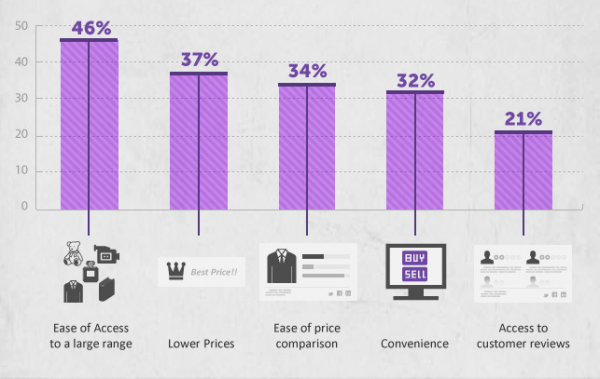
How shoppers find online stores
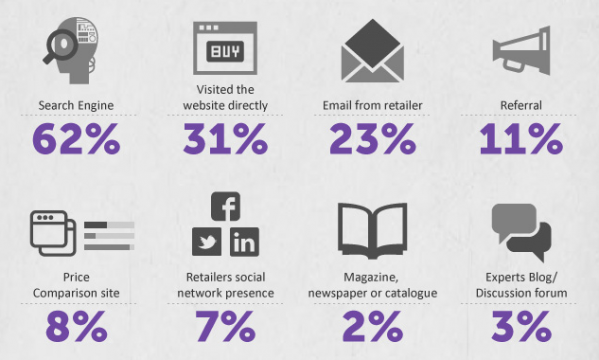
What gifts shoppers bought online in 2013
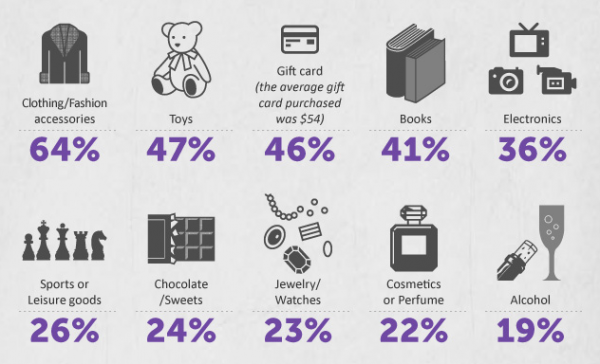
What would make an online shopper buy again
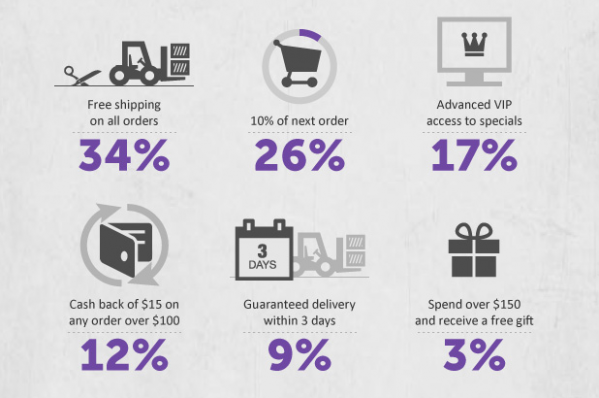
* Source: NAB Retail Index
Read MoreHow can you measure a marketer's contribution to the business?

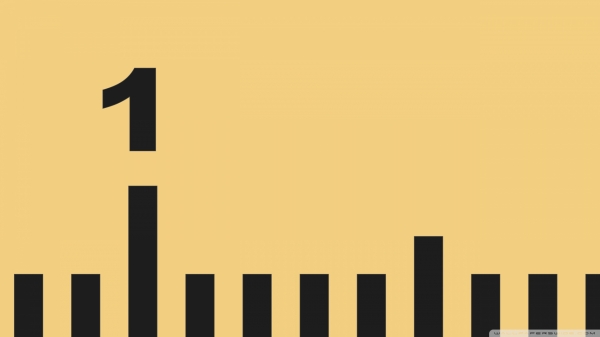
CEOs and business owners often ask me what’s the best way for them to measure my contribution to their business. The business of business has never been more complex, yet we are actually in an era where marketing is one of the few levers left that management can actually control to engage customers. And that’s how a marketer is best judged – by the improvement of the brand’s engagement with customers.
Marketing is all about the customer. The customer
Don’t just take my word for it.
A survey of CMOs across 92 countries reveals consensus – the most valuable measures of marketing’s contribution are in the areas of engagement and “brand health”. Health being a bit of a catchall word for the grab bag of KPIs that show how much customers recognise you, like you, value and understand what you stand for. They also ranked the capabilities that will be more important to marketers over the next 5 years.
KPIs for measuring marketing effectiveness
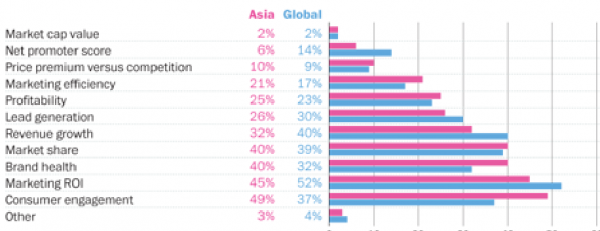
Source: The Marketing 2020 Report, Effective Brands survey of 10,000 professionals across 92 countrie
The capabilities most important for marketers in 5 years
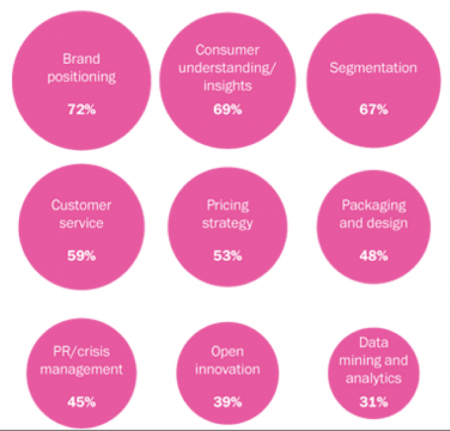
How to manage the 9 biggest marketing challenges
Here is how we manage the biggest marketing challenges today:
- What do you stand for?
Define your differentiated positioning in the market that not only you have a passion for, enough prospects will pay for. - Know your customer
Base your story on what customers genuinely care about that you can deliver. The features with benefits that ideally are unmet by competitors, or unknown to prospects. Think like a challenger brand. - Define your target audiences
Don’t attempt to sell something to everyone. It’s the era of niches within subgroups. Align your messages to what each customer target cares about. - Customer service
Never over promise, always over deliver on expectations.See some of the proven ways to foster customer loyalty here. - Pricing strategy
Remember pricing is a two way lever, framing value to maximise profit is the game, not cost plus pricing, that was the era of mass market production line manufacturing. Be nimble and exploit unique profit opportunities from short term market mispricing. Then find another. - Packaging and design
Sell the sizzle. Creativity and a consistent brand image increases cut through, recall and engagement and helps you command a price premium. Bad ads are bad for business. Stand out and apart. Safe isn’t just boring, it’s high risk. - Be prepared for a crisis
The Internet now makes everything public and places the power in the customer’s hands. Have a plan. Tell the truth, you’ll be outed if you don’t. Make sure you know your legal position with social media. - Innovate for growth
Or die. Big business struggles to change, this is the great advantage for those who aren’t market leaders. Become a challenger brand by zigging while the category zags. See the bottom line benefits of innovation as determined by AIM, they are significant. - Data
We are now in a digitised world. The companies that have the most data on people have the power to own their custom. Whether you are a manufacturer, distributer, service business or retailer, the business that makes the most of data will control the money.
Read More
Email outperforms social media for new business, by far


McKinsey has just published some research I wrote about last year on the ineffectiveness of social media for customer acquisition. While marketers have increasingly jumped on the social media bandwagon, the stats show the effectiveness of Facebook and Twitter as a method of acquiring customers has remained flat. In contrast, email’s share of customer acquisitions has shot up over the last three years by 700%.
% of customers acquired by channel
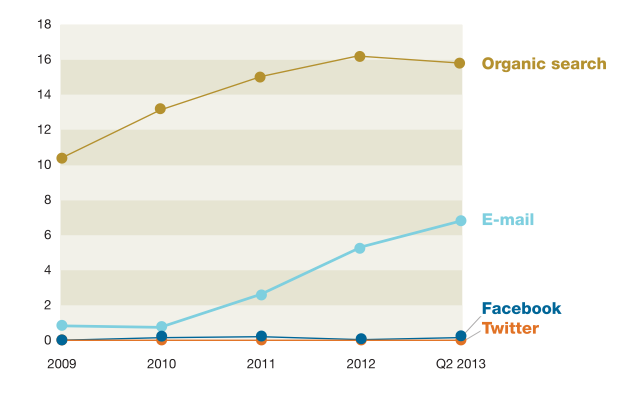
Source: Custora, E-Commerce Customer Acquisition Snapshot, 2013. McKinsey iConsumer survey
The tip for challenger brands here is to zig when the others zag. The more your competition and every other marketer swamp social media with activity, the less likely you will be noticed. Personally, every time I now venture onto Facebook I am actually getting rather tired of being targeted by advertisers for diets, wine and dating.
Facebook is out of favour for new business
In the quest to deliver Facebook shareholders a profit, marketers are being encouraged to spend big. Meanwhile Facebook users are beginning to move on. The statistics show us those marketers who continue using email can expect 40 times the customer acquisition than from Facebook and Twitter combined.
That's not to say I'm recommending mass email blasts. The frequency of spam in your inbox is why marketers now have to be more discerning in what they send and who they send it to. For instance, Qantas has a frequent flyer database of 10 million members, slicing and dicing and and segmenting offers with hundreds of individual creative executions.
When Email marketing, remember what’s in it for the customer
Most of us hate spam. Prospects and customers however generally appreciate receiving an email when it concerns something of value to them. Depending on your category, different days of the week achieve higher responses. And of course, research on brand recall has proven the more creative your message, the more your brand will be remembered.
So make sure your email campaigns are well crafted and you offer a real benefit aligned to a genuine customer need. In other words, smart marketing not spam.
Read MoreHow Private Label hollows out brands

Australia is unique for the oligopolistic power of just two supermarkets. Coles and Woolworths have 80% market share of an industry valued at A$80+ billion.
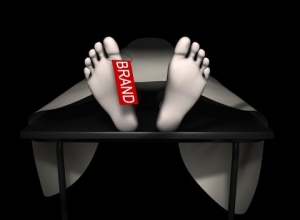 In the UK, the two major chains Tesco and Sainsbury have 48% and the US equivalent is just 20%. Consequently when our retailers brought in management from the UK to apply the successful Private Label model developed by Tesco and Asda they did so with the potential to have a significantly bigger impact on our market overall.
In the UK, the two major chains Tesco and Sainsbury have 48% and the US equivalent is just 20%. Consequently when our retailers brought in management from the UK to apply the successful Private Label model developed by Tesco and Asda they did so with the potential to have a significantly bigger impact on our market overall.
Private label is no longer cheap generic Black & Gold commodity lines, it's the key to the retailers growing profit at the expense of both brands and producers. Whether you are in the FMCG business or a service business, the Private Label strategy is one that threatens every business as the company with the most customer data gains ownership of the sales process.
Global FMCG brands now struggle to turn a profit in Australia
In the last year major FMCG brand owners like Unilever and Nestle have publicly lamented their lack of power in this country to compete with the oligopoly's own brand agenda. While we have more supermarkets per capita than the US and nearly 3 times as many as the UK, the 10,000 Australian independents have so little share and such disparate distribution requirements for fulfilment they offer brands little scope for profitable scale.
Most shoppers don't realise they're being had
The trend to consumer demand for more brand choice and gourmet choices is being matched by Woolworths by it's purchase of Macro Wholefoods and roll out of Thomas Dux stores. Not only have Woolies out-merchandised the Harris Farm model, they've done an even better job in wine.
Together, Coles and Woolworths have over 50% of the liquor market, not just through retail store brands like Dan Murphys, Liquorland, 1st Choice, Porters, Theos and Vintage Cellars, but the big online database driven direct marketers like Cellarmasters and Langtons. Here is how Choice sees it:
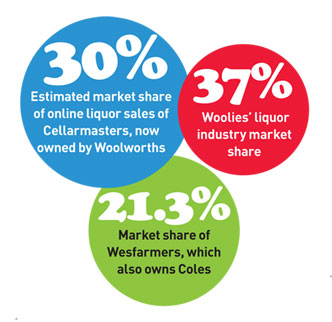
This dominance has enabled the two majors to dictate what brands you can buy. They have delisted most small vineyards and substituted them with a cynical excercise in facadism. There is a plethora of over 240 Private Labels masquerading as boutique wines giving the impression of choice. They are merely made-up attractive wine labels stuck on bottles of mass produced vin ordinaire. From Abbey View to Willowbrook, see the list of fake wine brands for yourself.
Now they are using their data Intelligence to segment and market everything from Private Label credit cards to health insurance. For instance, they use loyalty card tracking of grocery purchases and the knowledge that if you eat red meat you are a better actuarial risk to target the insurance sales process. What insurance company can compete with this big brother view of Australians?
How does a business compete with this onslaught? A study by international branding expert Professor Mark Ritson of Melbourne Business School gives some insight...
The formula for Private Label success
• Lack of perceived differentiation between brands in a category
• Lack of value innovation of incumbent brands
• Increased proportion of price promotion activity
• Available production capacity
• For me products
• Smart retailers
• Competitive retailers
• Concentrated retailers
The power of the retailers in this market allows them to demand more price promotion from brands, which leaves little in their budgets for brand building marketing campaigns or new product innovation. In no time the brand values are hollowed out, leaving the category ripe for Private Label substitution.
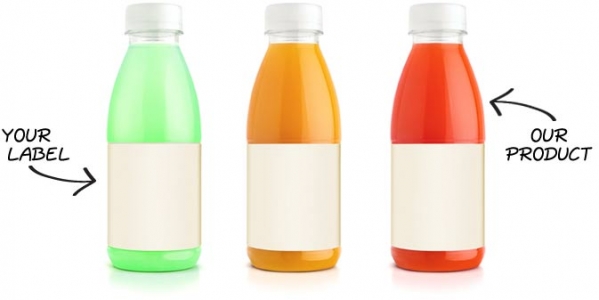
The Seven stages of Private Label dominance
Stage 1: Price-based generics (Home Brand, Black and Gold etc)
Stage 2: Copycat (Penguin vs Puffin biscuits)
Australia has passed here and well into the next stage.
Stage 3: Good, Better, Best (Tesco Value, Tesco, Tesco Finest)
Stage 4: Flanker brands (brand extensions to attract brand 'switchers')
Stage 5: Category leaders (Sainsbury Extra Special Tea Bags)
Stage 6: Non exclusive (expanding beyond the store)
Stage 7: Legal monopoly
The supply side to killing brands
The no-name supplier is offered a carrot to become the stick that wacks the known brands.This business is often an existing maker of their own known brand line. Why would a Heinz for instance supply Woolies Private Label baked beans? This is what attracts them:
- Usually opportunistic origins
- Often based on excess capacity utilisation
- Any contribution over variable costs of production is seen by management as good
- Less profit... but still profit
Where it leads is usually not so positive. Here is what happens when the no-name supplier exceeds production capacity:
- Increased production costs for same or less profit
- Cannibalisation of existing branded product
Gradual strategic 'split':
- From brand builder to PL supplier
- Internal resources get utilised
- An implicit strategic change
Change of business from:
- Brand builder / innovator / consumer focus to
- PL supplier / cost cutter / business customer focus
Private Label and the weaker brands are consolidated:
- As PL grows weaker manufacturer shares decline
- Brand fights brand – not PL
- To maintain brand and shelf presence, 'lesser' products become 'propped' up with disproportionate costs
- Resources become further diluted
- Finally, once mighty brands are de-listed by the duopoly
- The retailer approaches a new potential supplier for PL, and so it all repeats
How high can Private Label go? (How low will brands fall?)
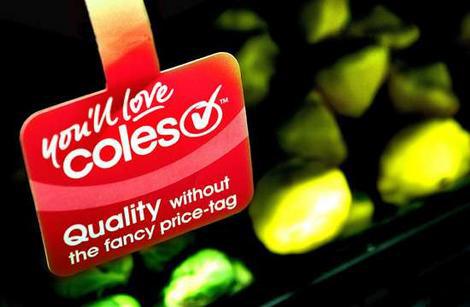
Private Label share in Australia today
23% is current floor
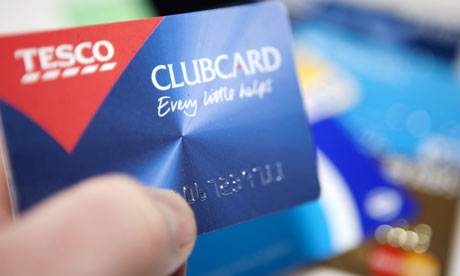
The UK is in the middle
50% Private Label
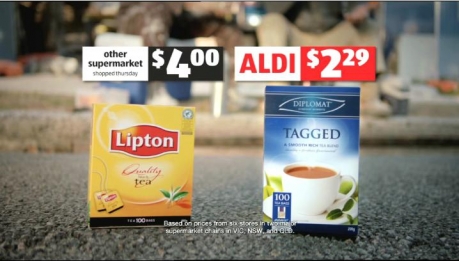
Theoretical ceiling
95% of product in Aldi is Private Label

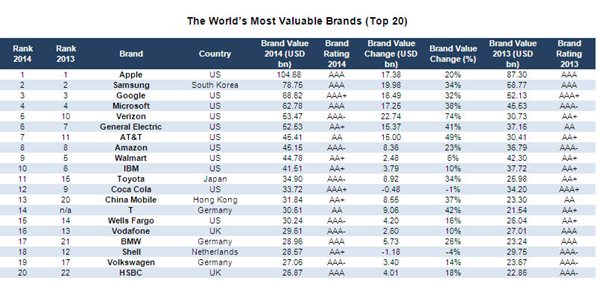
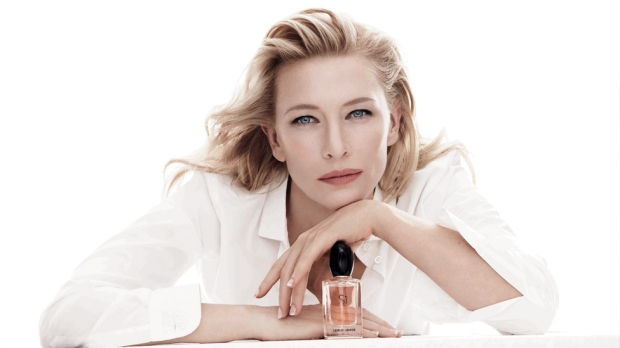



Scan the QR code for our contact details.
Download the Neoreader app.
© COPYRIGHT 2013 UNO marcomms Privacy